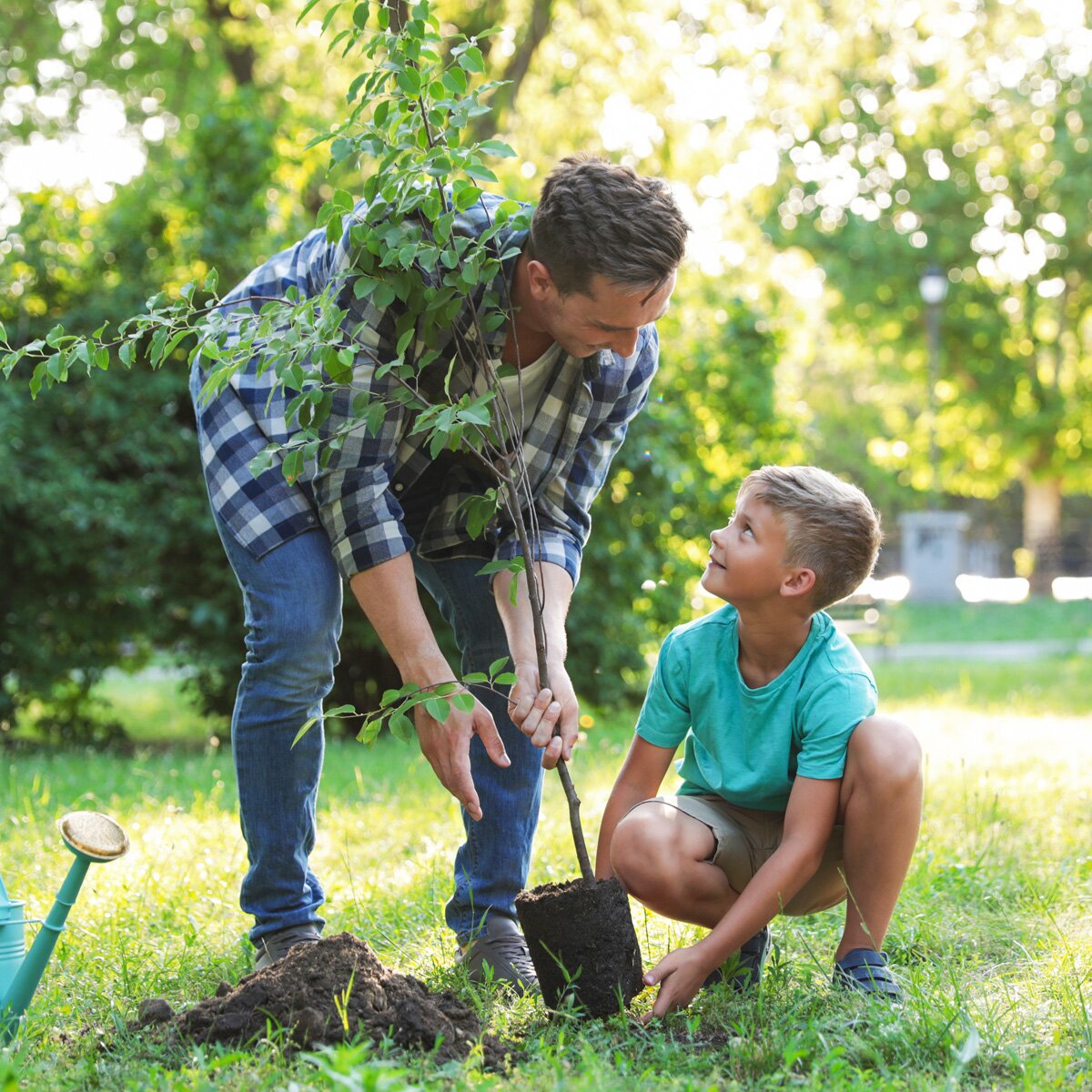Fall Planting to Save Energy in Georgia
09/26/2025

Planting trees and shrubs around your home and property does more than just boost curb appeal. It attracts songbirds and other wildlife, helps clean the air, muffles unwanted noise and, perhaps most importantly to some people, reduces energy costs when done properly. And fall is one of the best times to dig in and get started, so let’s take a closer look in this week’s blog on planting to save energy.
Why Fall Planting Makes More Sense
Before we get into the nitty gritty on how, where and what to plant, we thought we’d take a second to talk about the advantages of planting in the fall, versus other times of year. And we want to make it clear we’re talking about Georgia, where Gas South is headquartered, in case any of you readers happen to live in other states with different climates.
Fall planting is advised here, for one, because it offers ideal soil temperatures. Moisture conditions are typically better, as well, and that helps reduce stress on the plant without the need to irrigate heavily. There are also fewer pests that eat plants and spread disease this time of year. And fall is a time when many plants go dormant, which means less stress and better survival rates—and a head start for spring!
How to Get Cool Weather Energy Savings
Thoughtful landscaping can play a powerful role in keeping your home warmer in colder months. Here’s how:
- Windbreaks reduce heating costs: Dense plantings block cold-weather winds especially from the north and northwest.
- Solar gain keeps things cozy: Deciduous trees, which are bare branched during cold seasons, let sunlight in to warm your home naturally
- Plants help insulate: Evergreen shrubs planted close to your foundation can help buffer temperature swings
How to Plant for Cool Weather
To maximize energy savings through landscaping, it’s important to consider placement and plant type. Here are some key guidelines to follow:
- North and Northwest Sides: To create windbreaks, plant evergreen trees and shrubs on the north and northwest sides of your home and property, using staggered rows for better coverage
- South Side: Plant deciduous trees on the south side of your home because, as we mentioned above, they lose their leaves in the fall and winter, which enables more sunlight to naturally warm your home, inside and out
- Spacing: For windbreaks, plant trees and shrubs 20 to 50 feet from your home, depending on the eventual tree height and density. Closer plantings may offer more immediate protection, though it may become an issue as your plants begin to mature later.
Fall Planting Quick Tips
- Clear all weeds and grass from the planting area
- Dig a wide hole, two to three times the width of the root ball—but no deeper than the root ball
- Gently loosen wound-up roots if grown in a container—and don’t let them dry out before planting
- Level the top of the root ball with the ground surface—or just slightly above—as the plant’s trunk or stem should not be covered
- Water deeply just after planting to eliminate air pockets and to help the soil settle
- Apply 2-3 inches of mulch around the base, keeping it away from the trunk
- Skip fertilizing, as this can encourage new growth vulnerable to frost
- Stake spindly trees in windy areas—remove after the first growing season
Which plants should I consider?
If you're ready to get started planting, here are some plant options that do well in Georgia:
- Deciduous Trees: Georgia tree options in this category include red maple, dogwood, redbud, bald cypress, sweetgum, sweet birch and smokebush
- Evergreen Trees: Great examples of evergreen trees include eastern red cedar, loblolly pine, Fraser fir, Atlantic white cedar, Virginia pine, red bay and southern magnolia
- Evergreen Shrubs: Popular evergreen shrubs include boxwood, holly, loropetalum, Indian hawthorn, gardenia, azalea and yaupon holly.
Thanks for reading our blog. Stay tuned for more energy savings tips in the future.
 Help
Help Giving Back
Giving Back My Account
My Account Sign Up
Sign Up











